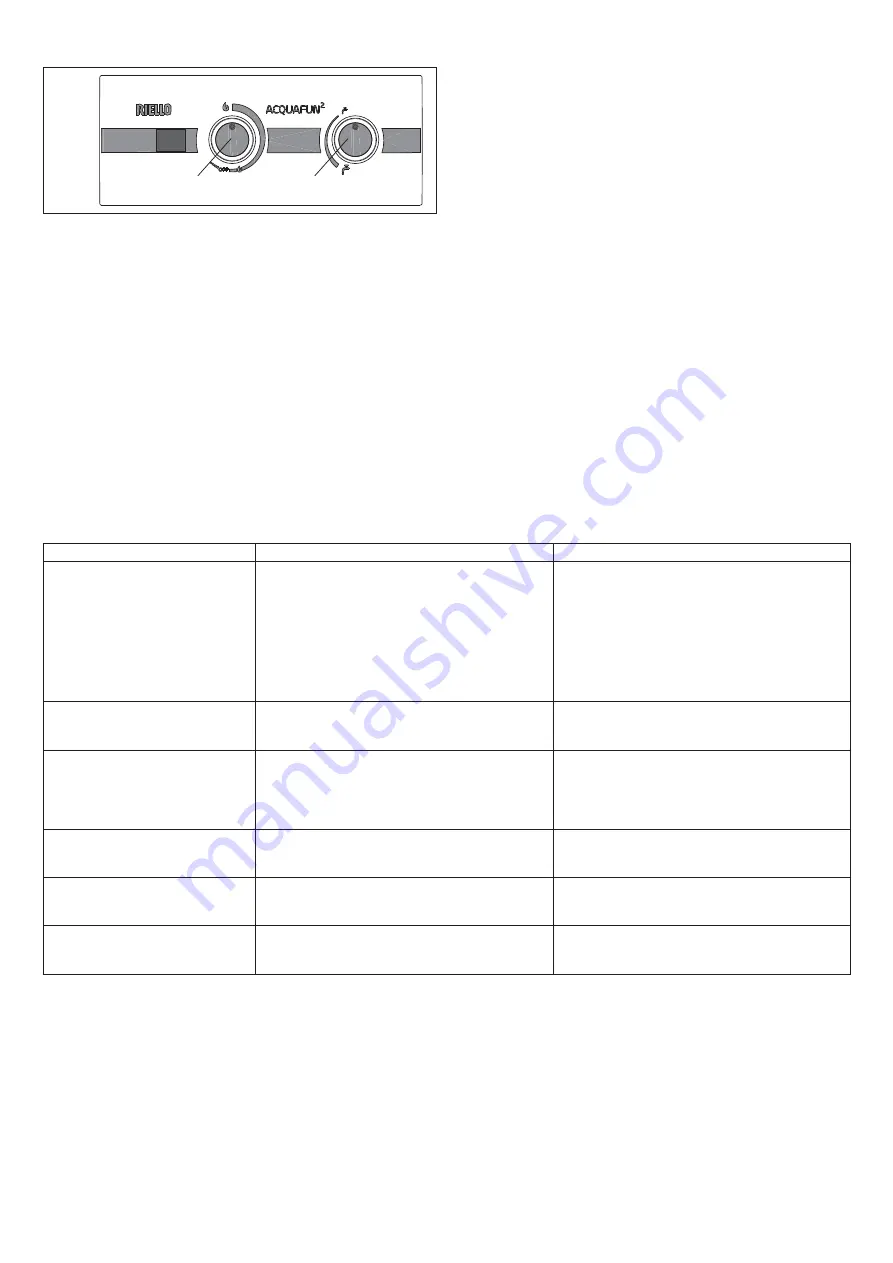
15
ENGLISH
- remove the knobs
D-E
(fig. 11)
fig. 11
D
E
- remove the casing.
To reinsert the casing, follow the above steps in reverse order.
4.b Troubleshooting: Problems and solutions
For the best functioning of the water heater, to prolong its lifetime
and ensure that it is always safe, ensure that it is inspected at least
once a year by a trained professional. The trained professional is
to perform the following maintenance operations:
- remove any rust from the burner
- remove any deposit on the glow plug by the electrode
- clean the combustion chamber
- check the ignition, switching off and general functionality of the
device
- check that the gas and water tubes and connections are sealed.
Warning:
the flowing repair instructions are only to be performed
by qualified and authorized technicians.
FAULTS
CAUSE
SOLUTIONS
there is no spark
- exhausted battery
- electrical cable of device disconnected
- electrical card broken
- there isn’t sufficient water pressure
- micro-switches broken
- slack wiring
- the membrane broken
- the electrode damaged
- substitute
- insert
- check, substitute
- repair the device to guarantee pressure, rotate
the selector knob all the way to the right
- check, substitute (see electrical diagram)
- verify the correct wiring connection
- substitute
- substitute
the pilot does not switch on when
there is a spark
- safety device broken
- no gas supply
- air in the gas tubes
- substitute
- open the gas tap
- release gas
the burner does not switch off when
the water turns off
- grime on the gas shutter
- valve piston or stem locked in open position
- micro lever locked in open position
- if an LPG supply, check the gas pressure
- check, clean
- disassemble, clean and eventually substitute
- check
- regulate and if necessary substitute the tank
pressure regulator
the exchanger blade becomes dirty
in a small amount of time
- poor draught or dusty surroundings
- yellow flame
- excess gas consumption
- check the smoke channel efficiency
- check the gas type and clean the burner
- check and regulate
there is smell of gas
- due to the loss of gas in the tubes, check the
tubes and find the leak
- do not activate electric switches or any object
that produces sparks in local area, ventilate the
room
there is smell of burnt gases
- it can be caused by obstruction in the flue gas
circuit
- excess gas consumption
- check the efficiency of the smoke channel and
the flue gas conduit
- check and regulate













































